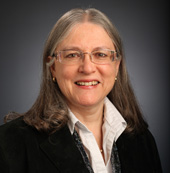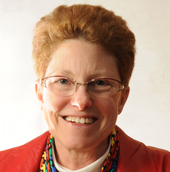Science has harnessed the power of “gene drives,” a biological process that can profoundly and rapidly alter the characteristics of entire species, in ways that may prevent the spread of malaria, ensure weed-free crops and benefit humankind in countless other ways.
But while scientists may now control a key “throttle” of genetic inheritance, do they know how to work the brake? Can they put it into reverse? How good are they at steering? What’s to prevent them from driving off the road?

These questions are raised in a new report released this week by a committee of the Board for Life Sciences, National Academies of Sciences, Engineering and Medicine. The committee was co-chaired by Elizabeth Heitman, Ph.D., associate professor of Medicine in the Vanderbilt Center for Biomedical Ethics and Society.
“There is insufficient evidence available at this time to support the release of gene-drive modified organisms into the environment,” the report concluded. “However, the potential benefits of gene drives for basic and applied research are significant and justify proceeding with laboratory research and highly-controlled field trials.”
“[lquote]We need to know more about potential for unintended consequences[/lquote],” Heitman said during a public briefing Wednesday in Washington, D.C. “We need very definitely to … develop better containment and confinement strategies to minimize unintended release, unintended persistence in the environment of any kind of gene drive-modified traits.”
Collaboration among scientists, funding and regulatory agencies, communities and nations is essential. “After release, a gene drive-modified organism is intended to spread,” she added. “… A gene drive-modified organism does not know and does not respect political boundaries.”
It’s been known for years that some organisms exhibit “biased inheritance,” an enhanced ability to pass a genetic trait from parent to offspring, explained committee co-chair James Collins, Ph.D., of Arizona State University. Gene drives thus can accelerate genetic change through a population by altering the expected rules of inheritance.
With the advent of a powerful genome editing technique called CRISPR/Cas9 in 2012, it became theoretically possible for researchers to “drive” a desired genetic trait through a population in order, for example, to make mosquitoes resistant to the organism that causes malaria.
CRISPR/Cas9, along with other genome editing techniques, “completely revolutionizes genetics,” said Roger Cone, Ph.D., chair of the Vanderbilt Department of Molecular Physiology and Biophysics and a member of the Board for Life Sciences.
But while genome editing is largely confined to the laboratory, “the goal of gene drives is to … change the genes of a population in the wild,” Cone said. Both techniques are “incredibly simple … something that basically any molecular biologist in any country can do.”
That’s why Cone and others urged the Board for Life Sciences to start thinking about the safety, regulatory and ethical issues involved with the technology.
The result was the formation of a 16-member “gene drive research” committee representing a wide range of disciplines and, after nearly a year of work, its 200-plus page report, “Gene Drives on the Horizon: Advancing Science, Navigating Uncertainty and Aligning Research with Public Values.”
Understanding values is important because while people in the tropics, for example, may benefit most from releasing a mosquito unable to transmit malaria, they also deserve to know the potential risks – that gene drive may inadvertently make the mosquito a more efficient carrier of another disease.
“What are the uncertainties?” Heitman asked. “What are the harms and benefits that we can envision? At each step, these questions will need to be answered before moving to the next step.”















